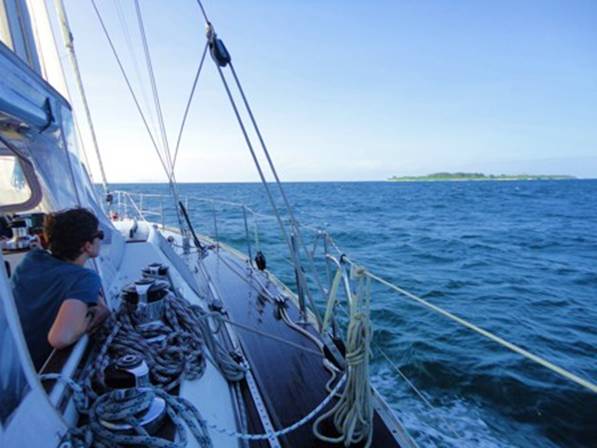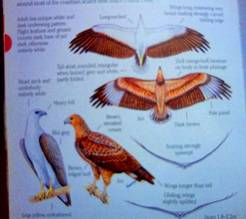Louisiades, Duchateau Islands

|
11:16.68S 152:21.06E Friday 16th July 2010 Arrival
Papua New Guinea, Du Chateau Island A very fast sail, averaging 180 miles a day with the wind just
forward of the beam, we managed to get into the safe anchorage inside the
Calvados Chain of islands in time to see the reef in the last of the good
daylight, at 4 p.m.
Our new crew member, Ollie, could not have been more
relieved, having spent the last three days and two nights in fear of throwing
up, hardly eating and drinking anything more than water, dry biscuits and the
odd hot drink of sweet ginger or Bovril, in between sips of water.
It was an easy entrance to the anchorage, in beautiful clear
water. Peace and quiet at last! David never noticed the roll of the boat
at night, which nearly flung me out of bed, when the water was heaving
over the protective reef around us. We spent one day there, for
David to repair the broken Mainsail outhaul and rethread it. He had
brilliantly managed to make a temporary repair the morning of our arrival,
which ensured we could surf along at nearly 10 knots towards our landfall
before the light faded too much. The other main problem to solve was
to clear the blocked drain pipe in our gas bottle locker. That locker had filled with water which had poured in from
all the waves crashing into us, and having nowhere to escape but into the
bilges under our aft cabin. I had only noticed the problem when the
carpet was looking rather sodden!
Taking a walk ashore, Ollie spotted these beautiful white
collared kingfishers perched to catch fish in the rock pools, and the white
bellied sea eagle catch a snake to have for supper. Several scrub fowl were also on the shoreline, scratching
around in the mangroves, and we frightened away a few whistling ducks!
Amazing to see how far these animals are from mainland, but they are so happy
to be able to live on an uninhabited island. |


 The
spaghetti of mainsail lines and outhall lines being dealt with by David whilst
he is whipping the end of the new line he threaded through the boom. Not
an easy task either with so many hurdles for the mouse line to clear from one
end of the boom to the other!
The
spaghetti of mainsail lines and outhall lines being dealt with by David whilst
he is whipping the end of the new line he threaded through the boom. Not
an easy task either with so many hurdles for the mouse line to clear from one
end of the boom to the other!

